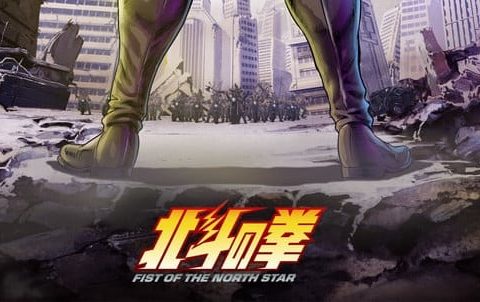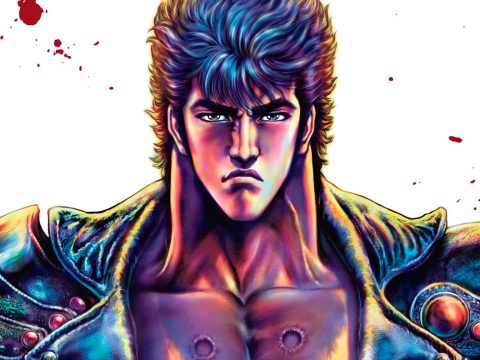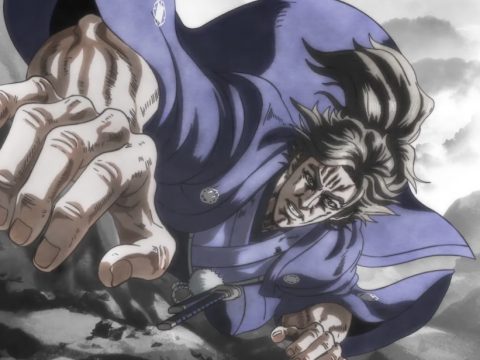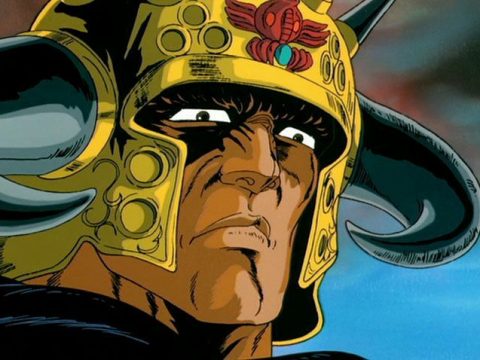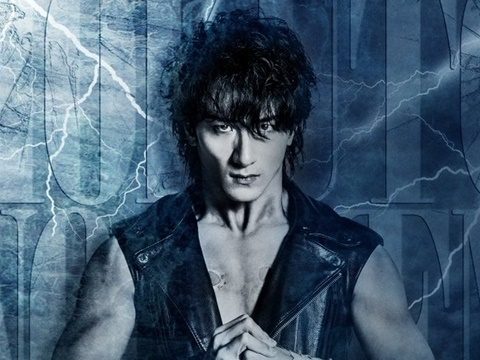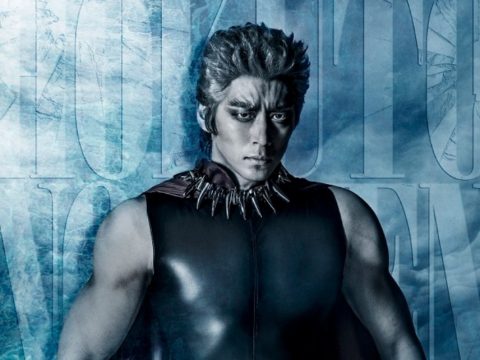As I mentioned in Otaku USA Issue 13, which i’ll just assume you read first because it saves me from having to re-explain the premise of the show, the 1986 theatrical movie for Fist of the North Star aka Hokuto no Ken is the primary way most US anime fans were introduced to the series that laid the groundwork for shonen fighting. (Crazy awesome as it is, Ring ni Kakero still counts as a sports title.) Nowadays, you can watch the entire TV series for free on the Internet thanks to Toei putting it up on various streaming sites, but you may be put off by the time investment required. We’re talking well over a hundred episodes of a show that despite a good restoration is definitely showing its age. The original movie is still one of the most concentrated examples of insanity ever created, but the tradeoff was there was only so much time to retell such a long story. So it only really covers the first part of the tale. What about the rest of it?
Enter North Stars Pictures, a company headed up by a lot of the same Japanese talents responsible for the awesome yet ill-fated Raijin Comics here in America. That includes Fist of the North Star artist Tetsuo Hara and editor Nobuhiko Horie who was Editor-In-Chief of Shonen Jump during their most popular era, back when they were selling like 6.5 million copies a week. Hmm, that might mean he’s also responsible for the neo-shonen advent, but as an act of penance for such a deed and also to mark the 25th anniversary of the legend of the century’s end savior, North Stars Pictures oversaw the release of three brand new theatrical Fist of the North Star movies from 2006 to 2008, with two OAVs released in the interim between them. They also were responsible for the recent Raoh Gaiden: Ten no Haoh TV series which I wrote about here.
Much like how the recent movie for The Incredible Hulk isn’t really a sequel to the previous [sucktacular] Hulk movie, the new movies aren’t technically related to the original. That said, they retell the parts of the story that happen before and after without redoing the story told in its predecessor. If you want to watch all the movies and think of them as one thing, you sort of can if you play fast and loose with the continuity. The series itself does it, and so can you! Like most long-running shonen manga, Fist of the North Star was made up entirely as it went along back when it was originally coming out. Retcons were inevitable; sudden revelations that certain characters didn’t actually die or others secretly had additional brothers or kids but didn’t bother to mention it until the story demanded they exist.
The movies streamline the narrative, and when I say that I don’t mean they completely omit it by a hilariously inaccurate script! As such, each movie title is prefixed with Shin Kyuuseishu Densetsu: Hokuto no Ken, which very roughly translated means something like “True Savior Legend: Fist of the North Star.” The first is entitled Raoh Den: Junai no Shou, and despite the name is not so much about Raoh himself than it is a retelling of my favorite story arc of the entire series: Kenshiro vs Souther, the Holy Emperor of Nanto Sei Ken who seeks to construct a pyramid using child slaves and child slaves ONLY.
Following that is the OAV Yuria Den, which tells the story of what Kenshiro’s lover was up to in the meantime. Thanks to actually knowing what the story was in advance this time, what was originally a big revelation in the TV series is now just exceedingly obvious: she’s not dead! There’s very little action in this one. In all honesty, there isn’t very much fighting going on in any of the new Fist of the North Star movies, and what fighting there is doesn’t have very much gore at all. If you want to see heads explode, the movie and the 3-part OAV that was released in America as New Fist of the North Star are your best bets. But in the 25 years since Fist came on the scene, the levels of violence in anime have reached the point where it’s just not as special anymore to see someone eviscerated. As I’ve said before, the reason the series has carried on and been remembered for so many years isn’t because of the violence. It’s the archetype-defining characters and the melodrama.
But if it’s a badass fight you want, the best of the bunch is the Toki Den OAV, which spectacularly reanimates my personal pick for the best fight in the series: the rematch between the blood brothers Toki and Raoh. Toki is the original and literal Kung-Fu Jesus, and when you have a show where the hero and villain are presented as practically invulnerable that makes it all the more memorable when someone else comes along and just kicks their butts. Still, the whole point of these movies is to build up to that final encounter between Kenshiro and Raoh, so the saga concludes with Raoh Den: Gekito no Shou, which covers the entire final arc of the series in less than 90 minutes. I know that cuts were inevitable, but I really would have liked to have seen Juuza of the Clouds in this. Juuza’s fight with Raoh, and its conclusion as depicted exclusively in the anime, is one of the single most memorable scenes in the entire show.
But wait. That’s only two movies and two OAVs, and now the whole thing is over. What about the third movie? Well, depending on your point of view, you’ll either love this or hate it. The final film of the new trilogy is Hokuto no Ken Zero, a completely new story that finally answers the question “just what the heck happened to Kenshiro between the time Shin gave him the seven scars on his chest and the time he came back to make him so enraged against tattooed thugs with mohawks anyway?”
The relative lack of blood-and-guts action compared to what one might expect from Fist of the North Star given its reputation might explain why, despite my desires to have purchased DVDs of all of these and charged them onto a Kenshiro Visa card like what they offer in Japan, none of these films was ever licensed for release in North America. At least like nearly all Hokuto no Ken material nowadays, English language fan translations exist and can be found out there in Internet land. So if you ever wondered what the fuss is all about such that people actually showed up when the producers staged a funeral for a cartoon character—a promotional manuever not seen since Ashita no Joe—the myriad of offerings from North Stars Pictures has got you covered.


